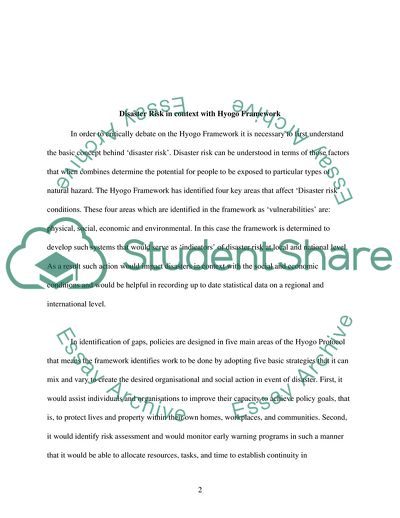Cite this document
(The Hyogo Protocol as an Important Initiative Case Study, n.d.)
The Hyogo Protocol as an Important Initiative Case Study. Retrieved from https://studentshare.org/environmental-studies/1711566-can-the-hyogo-agreement-provide-a-framework-for-achieving-a-substantial-reduction-of-disaster-losses-in-lives-and-in-the-social-economic-and-environmental-assets-of-communities-and-countries
The Hyogo Protocol as an Important Initiative Case Study. Retrieved from https://studentshare.org/environmental-studies/1711566-can-the-hyogo-agreement-provide-a-framework-for-achieving-a-substantial-reduction-of-disaster-losses-in-lives-and-in-the-social-economic-and-environmental-assets-of-communities-and-countries
(The Hyogo Protocol As an Important Initiative Case Study)
The Hyogo Protocol As an Important Initiative Case Study. https://studentshare.org/environmental-studies/1711566-can-the-hyogo-agreement-provide-a-framework-for-achieving-a-substantial-reduction-of-disaster-losses-in-lives-and-in-the-social-economic-and-environmental-assets-of-communities-and-countries.
The Hyogo Protocol As an Important Initiative Case Study. https://studentshare.org/environmental-studies/1711566-can-the-hyogo-agreement-provide-a-framework-for-achieving-a-substantial-reduction-of-disaster-losses-in-lives-and-in-the-social-economic-and-environmental-assets-of-communities-and-countries.
“The Hyogo Protocol As an Important Initiative Case Study”. https://studentshare.org/environmental-studies/1711566-can-the-hyogo-agreement-provide-a-framework-for-achieving-a-substantial-reduction-of-disaster-losses-in-lives-and-in-the-social-economic-and-environmental-assets-of-communities-and-countries.


